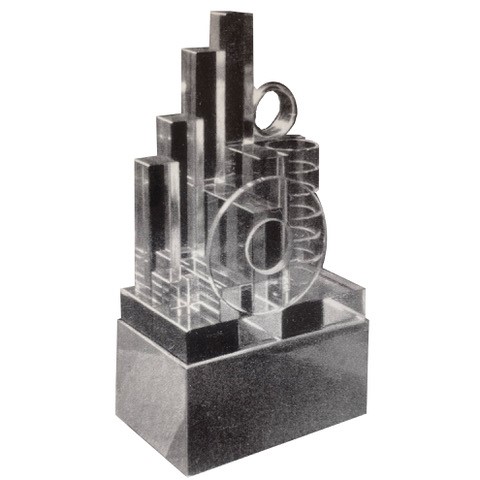Desny

Unfortunately, relatively little of Desny’s extensive oeuvre – whose first name is unknown – has been preserved. In his architecturally conceived style, which was strongly based on Mies van der Rohe, Desny created silverware, carpets and – from 1928 to 1931 – light sculptures and lamps. The quintessence of most Desny lamps is “architecture”: the lamps are seen as part of an ultra-modern building. In an article in the magazine >Lux< (1929), Desny decisively rejected the previously valid principles for lighting designs. In his opinion, it was wrong to intensively illuminate a room with centered light sources, just as it was wrong to avoid blinding lamps. His appliques, chandeliers and floor lamps therefore had reflectors that covered the light bulb and projected the beam of light. By this time, if direct light was required for reading or illuminating a painting, Desny was already recommending some type of spotlight. He equipped his work lamp, whose design is reminiscent of Le Chevalier, with an adjustable joint so that it could be adjusted in height and to any angle. A chandelier for an office was designed from a long, rectangular metal shade that could be attached to the ceiling on two extendable rods in such a way that its height could still be adjusted. According to him, the light objects that Desny designed in clear glass and metal had no other function than to brighten up a dark corner.
Source: Alastair Duncan, Lampen Lüster Leuchter, Jugendstil Art Déco, Prestel-Verlag, München 1979, p.166-167


-
RSA Antiquitäten Wiesbaden
-
Taunusstraße 34
65183 Wiesbaden -
+49 611 5 29 05 70
-
+49 170 7 83 01 13
-
info@antiquitaeten-wiesbaden.de
-
Mondayclosed
-
Tuesday - Friday12 a.m. - 6 p.m.
-
Saturday10 a.m. - 4 p.m.